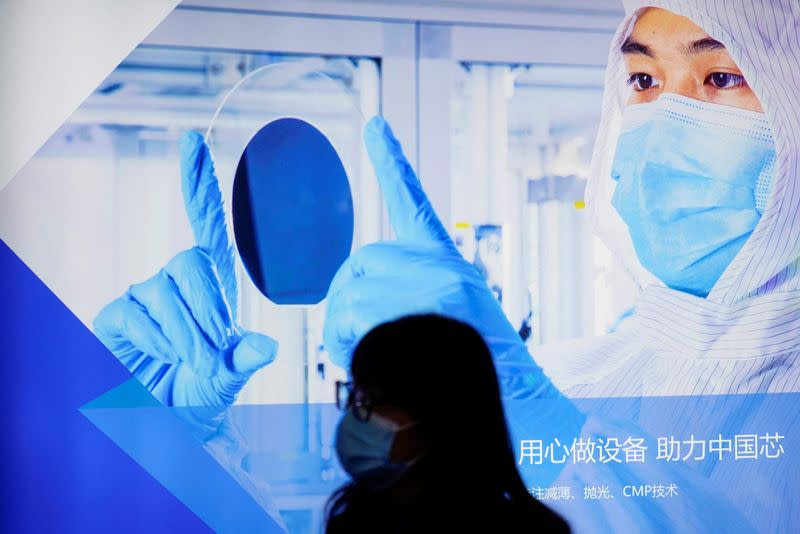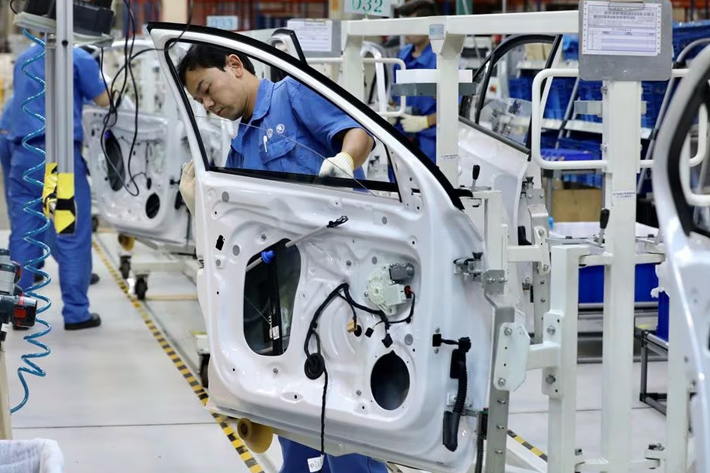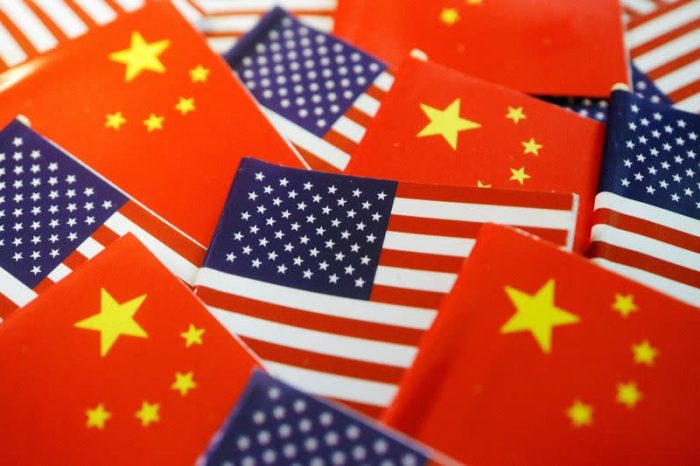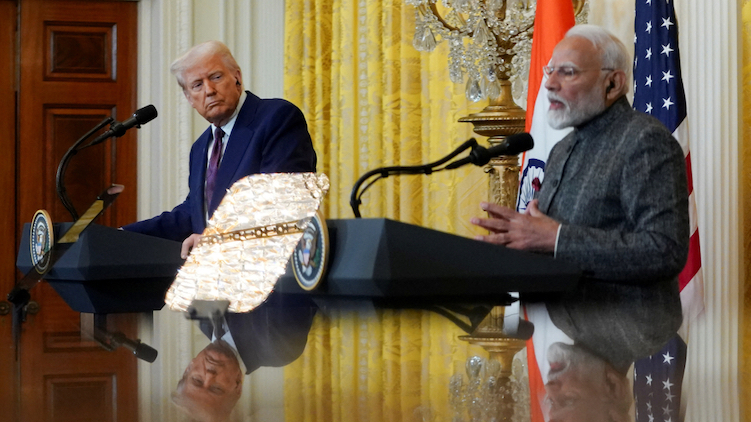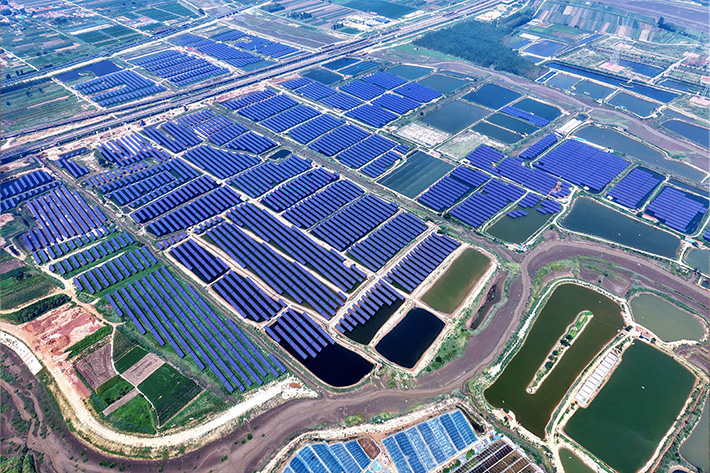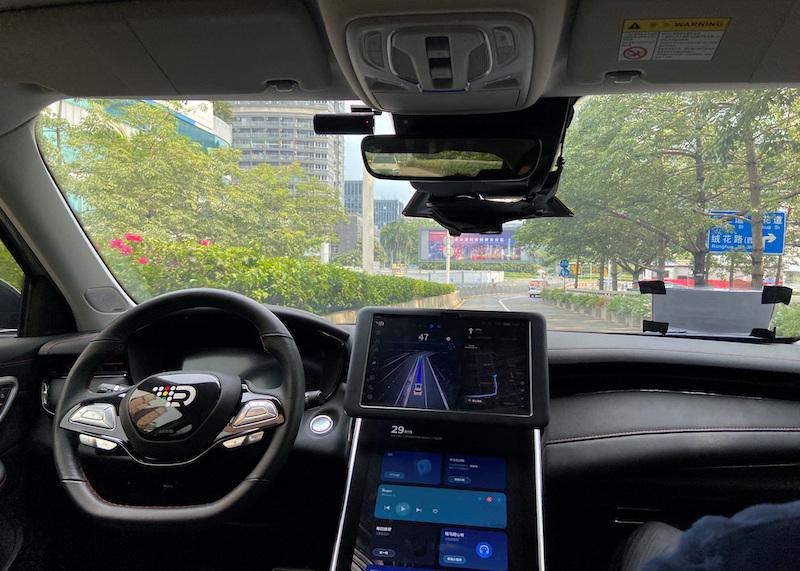China plans to splash $140 billion so its chip sector can overcome US export curbs, but the path ahead could be long and tortuous.
Unless Chinese firms can develop their own chip innovations, they may be trapped at the low end of the value chain, industry players say – even if with huge amounts of money.
The billions earmarked by Beijing could include subsidising the purchase of domestically produced chipmaking equipment, and would likely benefiting manufacturers such as China’s sole semiconductor lithography specialist, Shanghai Micro Electronics Equipment Group (SMEE).
The outlay was in response to the United States increasingly tightening export restrictions of chipmaking technology for fear it could be used to produce chips for applications such as artificial intelligence which could be used by China’s military.
ALSO SEE:
China Sets 5% Growth Target as National Congress Begins
Lack of exposure to advanced chipmaking
Money alone is not enough to catch Western rivals who are generations ahead. SMEE and local peers mainly sell to domestic chip foundries and the lack of exposure to advanced chipmaking facilities of the likes of Taiwan Semiconductor Manufacturing Co (TSMC) and South Korea’s Samsung Electronics has made it difficult for them to independently solve engineering problems and move up the value chain, industry workers and market watchers said.
“This prevents whatever advances they make in R&D from getting into mass production, and also limits them from learning more tricks of the trade,” said Mark Li, who tracks China’s chip sector at Bernstein Research.
SMEE did not respond to a request for comment.
Just as in the aviation industry, chipmaking equipment manufacturers work closely with clients, offering long-term services including installation, calibration, maintenance and repair of machines that can cost over $100 million each.
This collaboration can result in a substantial sharing of know-how that helps both sides advance technologically.
Too tough to solve
People who worked at SMEE and other Chinese firms in areas such as etching said barriers to entry did not seem too high until supply chains became even more global, the engineering more complicated, and the market cornered by firms such as Dutch lithography giant ASML Holding NV.
Top management at SMEE – led by a state power firm executive who launched the company in 2002 – had no lithography experience and staff built their first machines by buying and studying second-hand equipment and by reading public patents and papers, one former SMEE engineer said.
The firm advanced enough to produce a machine that could print circuit patterns as tiny as 90 nanometers (nm) on silicon wafers – two decades behind ASML. It was hailed as a domestic breakthrough nonetheless and in 2018 won a local government award.
SMEE has not made any major advancements since, in part due to difficulties in procuring equipment from abroad, the engineer said.
“Even if we could have built the machines, we wouldn’t have known how to service and maintain them,” the engineer said.
Another former top staffer at a Chinese chipmaking equipment manufacturer recounted how while working to master the etching procedure for 3D NAND Flash, the company could not perfect a critical element, namely the channel hole, or hole size.
“We knew what it takes to do that, but we were limited by the equipment’s design capability. Our US rival had already solved that,” the staffer said.
Academics say focus on R&D
Some people in the industry have urged a complete rethink in the way China can catch up by focusing on what the next era of chipmaking could look like rather than compete with overseas peers in trying to make circuits on chips denser and denser.
Late last month, two senior academics from the Chinese Academy of Science published an article advocating the re-focus of efforts on research and development for new technology and materials, rather than on emulating existing tech from overseas.
By amassing patents and managing their use overseas, the authors wrote, “We can set our own chokepoints and barriers in the global chip supply chain, create countermeasures, and hopefully resolve the current technological pain points.”
In the meantime, Chinese chip firms have become even more isolated since restrictions the United States imposed in October that barred US companies such as Lam Research and Applied Materials from supplying equipment that can produce relatively advanced chips without a licence.
The situation could be worsened for Chinese companies should Japan and the Netherlands agree with the United States to also restrict exports of chipmaking equipment to China.
“When the sanctions came out, all the American companies followed,” an engineer at a Chinese memory chipmaker said.
“When we bought our equipment, we used to get customer service. Now we can’t even get that because of the sanctions.”
- Reuters with additional editing by Jim Pollard
ALSO SEE:
Nvidia’s Plan for Sales to Huawei at Risk if US Extends Curbs
ASML in the Centre of the Chip War
ASML and Lam Research Pull US Engineers Out in China – SCMP
TSMC, Samsung Win Waivers; US Workers Ban Rocks China Firms
China’s Chip Industry Faces Deep Pain From US Curbs – FT




